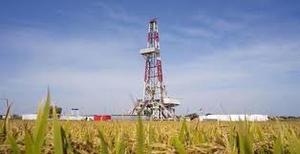FrackingRisk assessment of shale gas fracking to biodiversity
Fracking, the controversial method of mining shale gas, is widespread across Pennsylvania, covering up to 280,000 km² of the Appalachian Basin. New research explores the risks posed to biodiversity including pollution from toxic chemicals, the building of well pads and pipelines, and changes to wetlands.

A fracking tower in production // Source: sloetan.com
Fracking, the controversial method of mining shale gas, is widespread across Pennsylvania, covering up to 280,000 km² of the Appalachian Basin. New research in the Annals of the New York Academy of Sciences explores the risks posed to biodiversity including pollution from toxic chemicals, the building of well pads and pipelines, and changes to wetlands.
“Shale gas has engendered a great deal of controversy, largely because of its impact on human health, but effects on biological diversity and resources have scarcely been addressed in the public debate,” a Wiley release quotes study author Erik Kiviat as saying.
Science 2.0 notes that Kiviat points to physical and chemical impacts of fracking, including pollution by toxic synthetic chemicals, salt, and radionuclides, landscape fragmentation by wellpads, pipelines, and roads, alteration of stream and wetland hydrology, and increased truck traffic. He says that there has been little study of the impacts on habitats and biota. Taxa and guilds potentially sensitive to HVHHF impacts include freshwater organisms (for example, brook trout, freshwater mussels), fragmentation-sensitive biota (for example, forest-interior breeding birds, forest orchids), and species with restricted geographic ranges (for example, Wehrle’s salamander, tongue-tied minnow).
“This study indicated a wide range of potential impacts, some of which could be severe, including salinization of soils and surface waters and fragmentation of forests. The degree of industrialization of shale gas landscapes, and the 285,000 km² extent of the Marcellus and Utica shale gas region alone, should require great caution regarding impacts on biodiversity.”
— Read more in Erik Kiviat, “Risks to biodiversity from hydraulic fracturing for natural gas in the Marcellus and Utica shales,” Annals of the New York Academy of Sciences 1286, The Year in Ecology and Conservation Biology (May 2013): 1–14 (DOI: 10.1111/nyas.12146)
